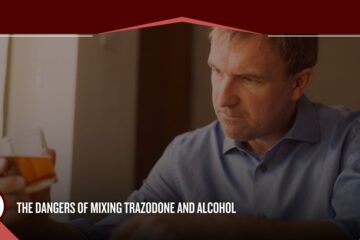According to research from the National Institute on Drug Abuse (NIDA), opioid abuse and addiction are severe problems in the United States. Many people become addicted to opioids after using prescription or illicit drugs, and many die of an opioid overdose.[1]
Opioid addiction can cause life-altering legal, health, and social consequences. Comprehensive treatment and ongoing support can help people safely stop using opioids and avoid relapse.
Living with an opioid use disorder can cause short and long-term changes in how a person thinks, behaves, and feels. Recognizing the symptoms of opioid addiction is the first step toward getting help.
This article will outline opioid addiction and how to recognize it. You will learn:
- What opioids are
- The signs of opioid abuse and addiction
- How opioid abuse is treated
- Where to find help for opioid use disorder
Contact the specialists at Alamo Behavioral Health now to learn about our addiction and mental health care programs. Our intake specialists will help you find the right treatment, verify your insurance, and schedule an initial assessment. Take the first step of your recovery journey by contacting us today.
Opioid Abuse and Addiction: An Overview
Opioids are natural or synthetic drugs that bind to receptors in the brain. Opioids affect parts of the brain related to pleasure, emotional regulation, and pain control.[2] People may take prescription opioids, like oxycodone and morphine, after surgery or to manage chronic pain. Or, people may use illicit opioids, including heroin.
Opioids are highly addictive. Doctors typically prescribe opioids for short periods to reduce the risk of opioid misuse and addiction. However, some people still develop symptoms of opioid addiction, even when using these drugs as directed.
Some people who become addicted to prescription opioids will begin to use illicit opioids like heroin. In fact, studies have found that up to 80% of people who are addicted to heroin abuse prescription opioids, first, before switching to heroin.[3] Other people experiment with opioid drugs and quickly become addicted.
Opioid use disorders can quickly become life-threatening. People who misuse opioid drugs are at risk of overdose and other severe complications. It is essential to seek treatment as soon as you recognize a problem.
Treatment for opioid use disorder typically includes:
- Medically-supported detox
- Medications like methadone and buprenorphine to reduce withdrawal symptoms
- Behavior therapy and counseling
- Counseling and education for family members
- Relapse-prevention education
- Mental health treatment
- Aftercare planning and support
Comprehensive treatment can help people safely stop using opioids and avoid relapse.
10 Signs of Opioid Addiction
Opioid abuse can change how a person looks, feels, and behaves. Recognizing these symptoms of opioid addiction can help you seek treatment as soon as possible.
1. Increased use
Opioids can relieve pain. They can also cause feelings of euphoria that may make people want to take more. If you notice yourself or someone else taking higher or more frequent doses of your opioid drugs, it may be a sign of opioid addiction.
2. Neglecting responsibilities
Opioid use may become the center of a person’s life. They may neglect their responsibilities at work or school. They may stop spending time with family and friends. Daily life tasks may fall by the wayside as the addiction takes over.
3. Tolerance
Tolerance means your body has adjusted to a specific dose of a drug. People with tolerance require more of a drug to get the desired results. Needing to take higher or more frequent doses of a drug may be a sign of addiction.
4. Withdrawal symptoms
If you stop taking opioids and experience withdrawal symptoms, you may require opioid addiction treatment.[4] Common withdrawal symptoms include:
- Muscle aches
- Nausea
- Sweating
- Chills
- Anxiety
- Insomnia
- Tremors
Professional treatment can help you manage these symptoms and have a safe detox.
5. Risk-taking
People with opioid use disorder may take risks, such as driving under the influence or engaging in illegal activities.
6. Loss of control
An addiction is a total loss of control over your substance use. People with opioid addiction do not want to use opioids–they have to take them to function.
7. Social problems
Opioid addiction can take over a person’s life. They may isolate themselves, stop communicating with others, or only spend time with others who abuse opioids or other drugs. Sudden isolation or social problems may indicate opioid abuse or addiction.
8. Time and energy
People with opioid use disorder typically spend a lot of time and energy to get more opioids. They may have prescriptions from multiple doctors or engage in illegal activities to get more. Everything else in their life becomes unimportant as the addiction grows.
9. Illicit drug use
Many people develop an addiction to opioids after misusing prescription drugs. If they cannot legally obtain more prescription drugs, they may turn to illicit street drugs like heroin.
10. Cravings
People who become addicted to opioids typically develop intense cravings for these drugs. Cravings are a sign of opioid addiction.
Find Help for Opioid Addiction Now
People can develop opioid use disorder, even without a personal or family history of substance abuse. It is critical to watch for signs of opioid abuse and seek treatment as quickly as possible.
Contact the Alamo Behavioral Health team to learn about your treatment options or to find support at any stage of recovery.
References:
- National Institute on Drug Abuse (NIDA): Opioids
- National Institute on Drug Abuse (NIDA): Mind Matters: The Body’s Response to Opioids
- National Institute on Drug Abuse (NIDA): Prescription opioid use is a risk factor for heroin use
- National Institutes of Health (NIH): Opioid withdrawal




